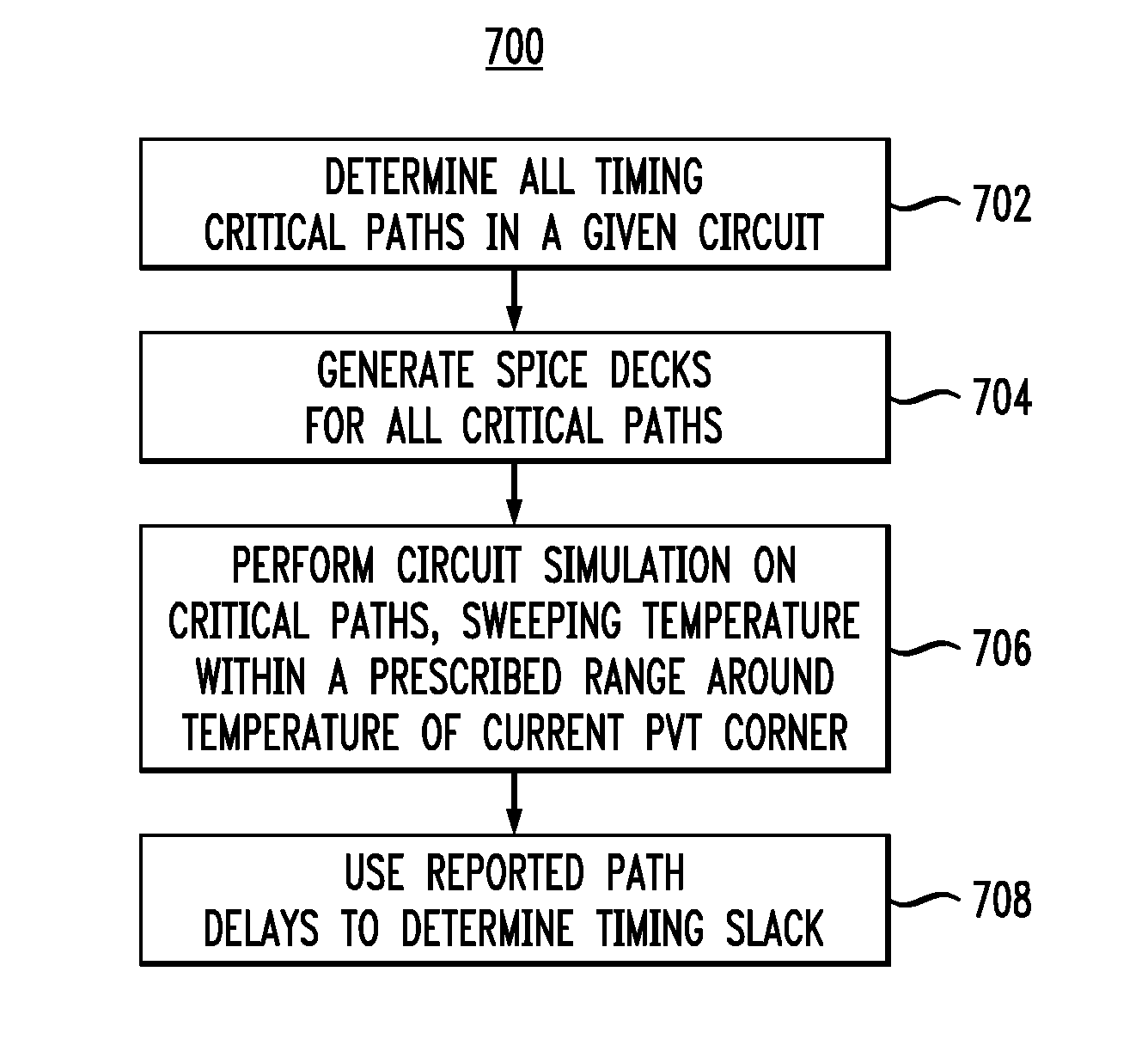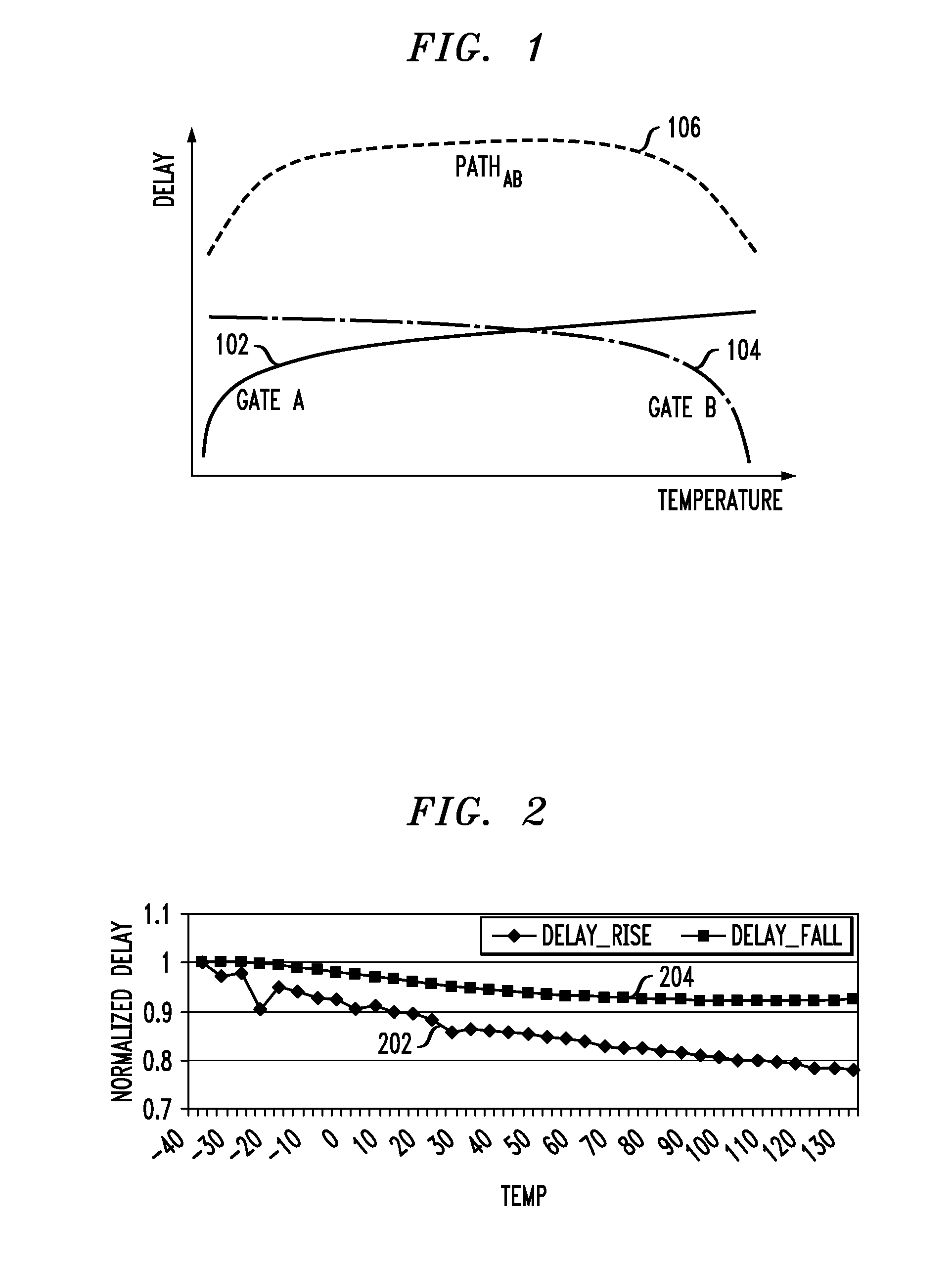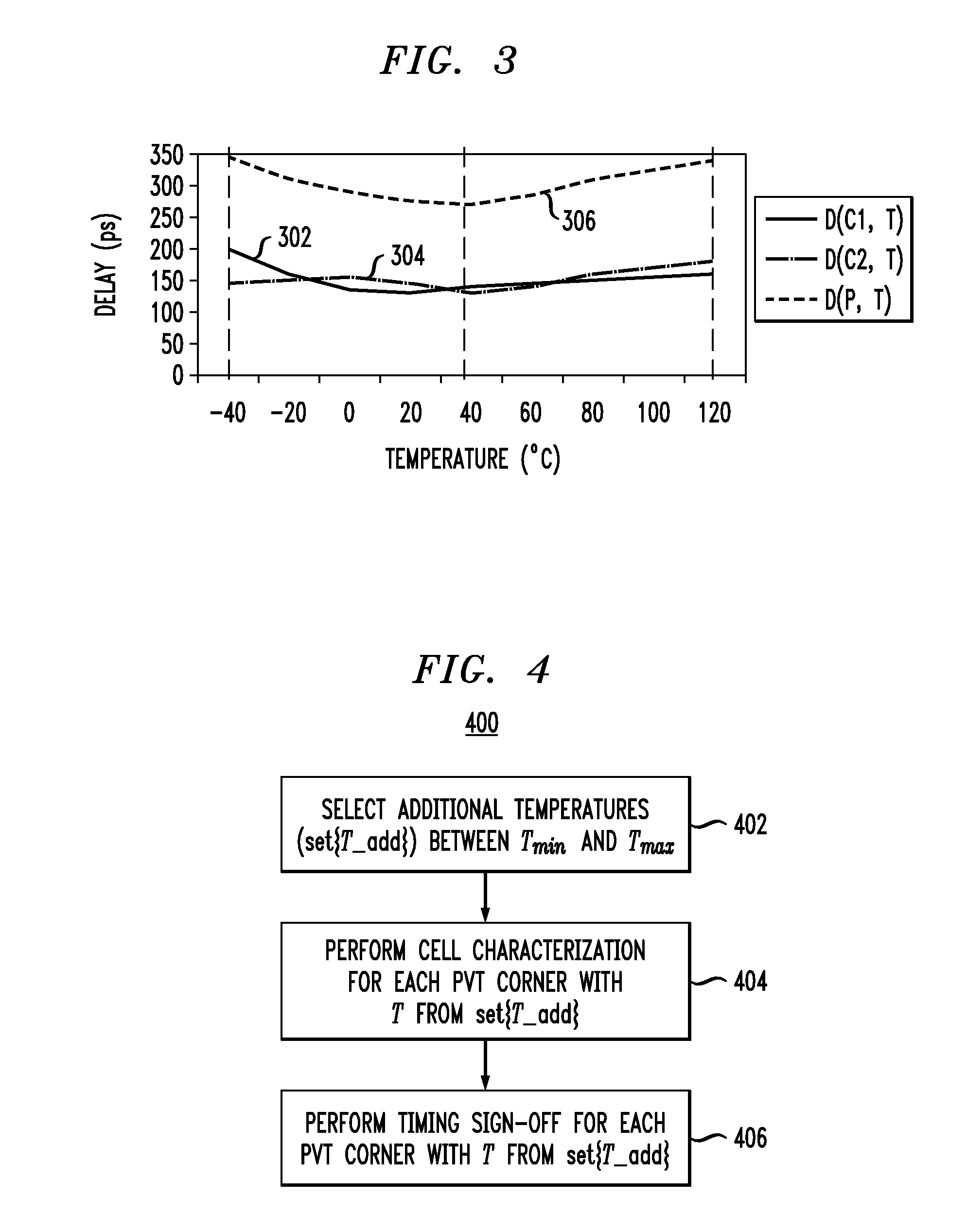Circuit Timing Analysis Incorporating the Effects of Temperature Inversion
a technology of circuit timing and temperature inversion, applied in the field of circuit timing analysis and design, can solve the problems of increasing cell delay with increasing temperature, reducing cell delay, and temperature dependence not being uniform for all cells, and achieve the effect of improving the accuracy of circuit timing characterization
- Summary
- Abstract
- Description
- Claims
- Application Information
AI Technical Summary
Benefits of technology
Problems solved by technology
Method used
Image
Examples
Embodiment Construction
[0023]The present invention will be described herein in the context of exemplary techniques for more accurately determining cell and / or path delay in a circuit. It is to be understood, however, that the techniques of the present invention are not limited to the methodologies shown and described herein. Rather, embodiments of the invention are directed to techniques for advantageously predicting timing behavior in a circuit taking into account temperature inversion effects. In this manner, a more accurate determination of cell and / or path delay in the circuit can be achieved. Although reference may be made herein to n-channel metal-oxide-semiconductor (NMOS) or p-channel metal-oxide-semiconductor (PMOS) transistor devices which may be formed using a complementary metal-oxide-semiconductor (CMOS) IC fabrication process, the invention is not limited to such devices and / or such an IC fabrication process.
[0024]Inverted temperature dependence (ITD), also referred to herein as temperature ...
PUM
 Login to View More
Login to View More Abstract
Description
Claims
Application Information
 Login to View More
Login to View More - R&D
- Intellectual Property
- Life Sciences
- Materials
- Tech Scout
- Unparalleled Data Quality
- Higher Quality Content
- 60% Fewer Hallucinations
Browse by: Latest US Patents, China's latest patents, Technical Efficacy Thesaurus, Application Domain, Technology Topic, Popular Technical Reports.
© 2025 PatSnap. All rights reserved.Legal|Privacy policy|Modern Slavery Act Transparency Statement|Sitemap|About US| Contact US: help@patsnap.com



